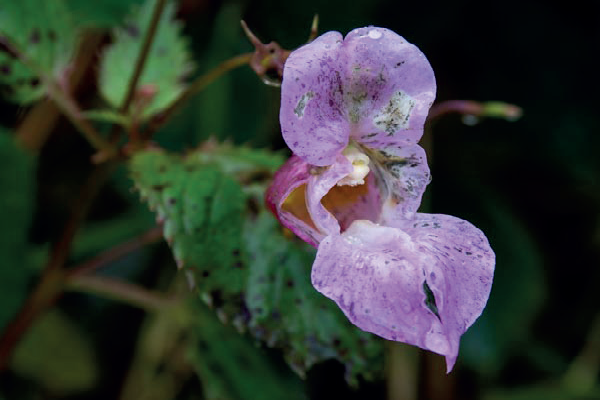Invasive Weeds – June 2020
7 June 2020Invasive weeds aren’t often an issue in fields, but they can crop up in field margins, non-cropped areas and beside water. The ideal is to catch them before they develop into a problem.
In Scotland, it is not an offence to have invasive weeds, but under the Wildlife and Countryside Act 1981 it is an offence to cause the spread of certain non-native invasive species. Control of non-native plant species is listed as a funding option under the SRDP 2014-2020 Agri-Environment Climate Scheme – Japanese knotweed, giant hogweed and Himalayan balsam are eligible.
Japanese knotweed is a perennial weed that regenerates from small rhizome fragments. It is mainly a threat to buildings, roads etc. although it also smothers out native vegetation. It requires repeat treatment with glyphosate to achieve effective control.
Giant hogweed is an issue because its sap can lead to skin rashes when skin is exposed to sunlight, so a particular threat where children may be playing. It is a biennial that germinates in spring and grows to produce a large rosette. This dies back overwinter but re-grows from a crown in following seasons until it flowers and seeds. It produces large numbers of seeds spread in water and by strong winds. It is possible to control giant hogweed by repeatedly cutting below ground level, or by digging out the crown – protective clothing should be worn, and care should be taken when handling giant hogweed to avoid skin rashes. In grass fields it is generally kept in check by grazing.
For chemical control, if it is growing in grassland away from water, a good option is a triclopyr-based herbicide such as Grazon Pro (clopyralid + triclopyr), as this does not kill the grass, however, it does kill clover. Near water, the only option is glyphosate which is authorised for use by water. SEPA should be contacted before using it by water. There is an on-line form to complete and return to SEPA.
Glyphosate will also kill the underlying grass, leaving bare patches. Natural vegetation needs to re-establish to prevent further germination of giant hogweed. For small infestations, stem injection with glyphosate 1:10 in water is a better option than spraying because it avoids bare patches and damage to surrounding vegetation. Weed wiping with a glyphosate solution can also be effective.
Himalayan balsam is an issue because it spreads rapidly and smothers native vegetation. It is an annual weed whose seed pods explode projecting seeds some distance from the plant. It produces a lot of seeds with low dormancy, so if one Himalayan balsam plant is allowed to seed, the following season a large patch of plants will germinate. One reason Himalayan balsam is so competitive is that seeds germinate very early in the spring before other vegetation has started to grow. Because the seeds have low dormancy, long term control is possible if seeding is prevented – pulling of plants to prevent seeding is an effective method in areas where the presence of other vegetation precludes spraying. To achieve long term control, it is necessary to make sure no plants are able to seed. In grass areas away from water, it can be selectively treated with Grazon Pro (clopyralid + triclopyr) or similar. By water, an option is weed wiping with glyphosate before the Himalayan balsam starts flowering. Permission should be sought from SEPA.
We have some additional information and video on our Invasive Plant Species webpage.
Sign up to the FAS newsletter
Receive updates on news, events and publications from Scotland’s Farm Advisory Service

